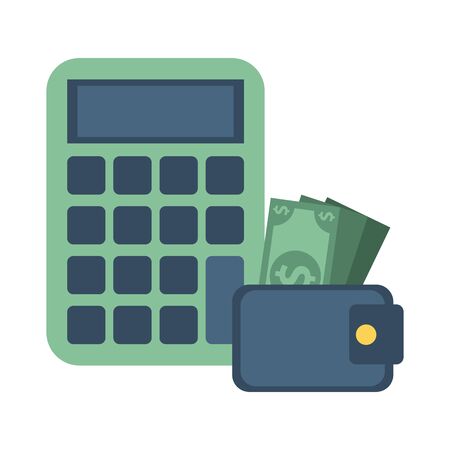1. Understanding Your Debt Types
Before you can create an effective monthly budget that includes debt repayment, it’s important to first get a clear picture of the different types of debt you have. In the U.S., common debts include credit card balances, student loans, auto loans, and sometimes personal loans. Each type has its own interest rates, payment schedules, and consequences for missed payments. Knowing exactly what you owe and to whom is the first step in taking control of your finances.
Why You Need to Know Your Debts
Not all debts are created equal. Credit card debt usually comes with higher interest rates and more flexible payments, but missing payments can quickly lead to fees and damage your credit score. Student loans often have lower interest rates and may offer deferment or income-driven repayment options. Auto loans are tied to your vehicle, meaning missed payments could lead to repossession. Understanding these differences helps you prioritize which debts should be paid off faster and plan your monthly budget accordingly.
Breaking Down Your Debts
| Debt Type | Typical Interest Rate | Monthly Minimum Payment | Consequences for Missed Payments |
|---|---|---|---|
| Credit Card | 15–25% | Varies (often 1-3% of balance) | Late fees, credit score drop, increased interest rate |
| Student Loan | 4–8% (Federal) | Fixed or income-based | Default risk after extended non-payment, credit impact |
| Auto Loan | 3–10% | Fixed monthly amount | Vehicle repossession, credit score impact |
| Personal Loan | 6–36% | Fixed monthly amount | Late fees, collection efforts, credit score drop |
How to Get Started
Create a list or spreadsheet with each debt’s details: who you owe, the total balance, current interest rate, minimum payment due each month, and payment due dates. This will help you see the big picture so you can make informed decisions as you build your budget.
2. Calculating Your Monthly Minimum Payments
When budgeting for debt repayment, its essential to know exactly how much you need to pay each month to stay in good standing with your creditors. Missing payments or paying less than the minimum can result in late fees, increased interest rates, and a negative impact on your credit score. Let’s break down how you can identify and organize your minimum monthly payments.
Understanding Minimum Payments
The minimum payment is the lowest amount you are required to pay on a debt account each month. This applies to most types of consumer debt, including credit cards, student loans, auto loans, and personal loans. Even if you plan to pay extra, knowing your minimum helps you avoid penalties.
Where to Find Minimum Payment Information
- Credit Cards: Check your monthly statement or log into your online account.
- Student Loans: Look at your loan servicer’s website or your billing statement.
- Auto/Personal Loans: Review your loan agreement or recent bills.
Creating a Debt Payment Table
To keep things organized, make a simple table that lists all your debts, their minimum payments, due dates, and remaining balances. Here’s an example:
| Debt Type | Lender | Minimum Payment ($) | Due Date | Remaining Balance ($) |
|---|---|---|---|---|
| Credit Card | Chase Freedom | 50 | 15th of each month | 2,000 |
| Student Loan | Naviance | 150 | 5th of each month | 10,000 |
| Auto Loan | Wells Fargo Auto | 300 | 20th of each month | 8,500 |
| Personal Loan | LendingClub | 100 | 25th of each month | 4,500 |
Total Monthly Minimum Payment Calculation
Add up all the minimum payments from the table above. For this example:
- $50 (Credit Card) + $150 (Student Loan) + $300 (Auto Loan) + $100 (Personal Loan) = $600 total minimum monthly payment.
TIPS FOR STAYING ON TRACK
- Add reminders: Set up calendar alerts or automatic payments to never miss a due date.
- Keep documents handy: Store digital or paper copies of statements for reference.
- Review regularly: Update your table monthly as balances and payments change.
This process helps you clearly see what’s required and ensures debt repayment fits smoothly into your overall budget plan.

3. Incorporating Debt Payments into Your Budget
When creating a monthly budget, it’s easy to focus on essential expenses like rent, groceries, and utilities. However, making debt repayment a regular part of your budget is just as important for your financial health. Here’s how you can effectively include debt payments alongside your other monthly costs.
List All Monthly Expenses
Start by writing down all your fixed and variable monthly expenses. Fixed expenses are things like rent or mortgage payments, while variable expenses include groceries, gas, and entertainment. Don’t forget to add minimum payments for each of your debts—like credit cards, student loans, auto loans, or personal loans.
Sample Monthly Expense Table
| Category | Expense |
|---|---|
| Rent/Mortgage | $1,200 |
| Utilities (Electricity, Water, Internet) | $250 |
| Groceries | $400 |
| Transportation (Gas/Transit) | $150 |
| Credit Card Payment | $100 |
| Student Loan Payment | $200 |
| Entertainment/Dining Out | $120 |
| Savings/Investments | $150 |
| Total Expenses | $2,570 |
Treat Debt Payments Like Any Other Bill
To stay consistent with your debt repayments, think of them as non-negotiable bills—just like your rent or utility payments. Set up automatic payments if possible so you never miss a due date. This can help you avoid late fees and protect your credit score.
Adjust Spending Where Needed
If you find that your total expenses exceed your income, look for areas where you can cut back. Maybe reduce takeout meals or subscription services so you can free up more money for debt repayment. Prioritizing debt will help you become debt-free faster and reduce the amount you pay in interest over time.
4. Prioritizing High-Interest Debt
When you’re working debt repayment into your monthly budget, it’s important to focus on the debts that cost you the most money—your high-interest debts. By targeting these first, you can save on interest payments and pay off what you owe more quickly. Here’s how you can make this strategy work for you.
Why Focus on High-Interest Debt?
High-interest debts, like credit cards or payday loans, accumulate interest faster than lower-interest loans, such as student loans or mortgages. If you only make minimum payments on all your debts, those high-interest balances can grow out of control. By paying off these expensive debts first, you reduce the total amount of interest you’ll pay over time.
Popular Debt Repayment Strategies
There are two main methods Americans use to tackle their debts efficiently: the Avalanche Method and the Snowball Method. Both have their pros and cons, so choose the one that fits your financial situation and personality best.
| Method | How It Works | Main Benefit | Best For |
|---|---|---|---|
| Avalanche Method | Pay off debts with the highest interest rate first while making minimum payments on others. | Saves the most money in interest over time. | People motivated by reducing costs. |
| Snowball Method | Pay off debts with the smallest balance first while making minimum payments on others. | Builds momentum through quick wins and boosts motivation. | People who need encouragement from visible progress. |
How to Incorporate These Methods into Your Budget
- List All Debts: Write down each debt, its balance, and its interest rate.
- Choose Your Strategy: Decide if avalanche or snowball is right for you.
- Add to Your Monthly Budget: Allocate extra funds toward your target debt each month while paying at least the minimums on others.
- Track Progress: Update your list monthly to see how much closer you are to being debt-free!
A Quick Example
If you have three credit cards with interest rates of 22%, 18%, and 15%, using the avalanche method means focusing extra payments on the 22% card first. With the snowball method, if your smallest balance is on the 18% card, start there instead—even if its rate isn’t the highest.
5. Adjusting Lifestyle Expenses to Meet Repayment Goals
When you’re trying to factor debt repayment into your monthly budget, one of the most effective strategies is to take a close look at your lifestyle expenses. By finding ways to free up extra money each month—especially from non-essential spending—you can put more toward your debt without missing out on what really matters.
Identify Discretionary vs. Essential Expenses
Start by separating your expenses into two categories: essentials (like rent, groceries, utilities) and discretionary (things you want, but don’t absolutely need). Here’s a simple table to help clarify:
| Essential Expenses | Discretionary Expenses |
|---|---|
| Rent/Mortgage | Streaming subscriptions (Netflix, Hulu) |
| Utilities (electricity, water) | Coffee shop visits |
| Groceries | Dining out/Takeout |
| Car payment/Transit pass | Shopping for clothes or gadgets |
| Insurance (health, auto) | Concerts, movies, events |
Cut Back Without Feeling Deprived
You don’t have to give up everything you enjoy. The key is moderation and creativity. Try these ideas:
- Limit dining out: Cook more meals at home and save restaurant visits for special occasions.
- Review subscriptions: Cancel or pause any streaming services or memberships you’re not using regularly.
- Ditch brand names: Buy store brands for groceries and household items—they’re often just as good as name brands.
- Look for free entertainment: Take advantage of local parks, community events, or library programs instead of paid activities.
- Brew coffee at home: Daily coffee shop runs add up quickly; making your own saves serious cash over time.
Create a “Debt Repayment Fund” Line in Your Budget
Add a specific category for debt repayment in your monthly budget spreadsheet or app. This helps you treat it like any other must-pay expense instead of an afterthought. As you cut back on discretionary spending, funnel that extra cash directly into this fund.
Example: Monthly Budget Adjustment Table
| Category | Original Spending ($) | Adjusted Spending ($) | Savings Applied to Debt ($) |
|---|---|---|---|
| Coffee Shops | $60 | $20 | $40 |
| Dining Out | $200 | $100 | $100 |
| Streaming Services | $50 | $30 | $20 |
| Total Extra Toward Debt | – | – | $160/month |
If you consistently apply these savings to your debt repayment plan, you’ll see faster progress—and maybe even reach your goals ahead of schedule. Remember, small changes in lifestyle can make a big impact on your financial future.
6. Utilizing Tools and Resources
When it comes to managing debt repayment in your monthly budget, having the right tools can make a world of difference. There are many budgeting apps and financial resources available in the U.S. that help you stay on track with both spending and paying down your debts.
Popular Budgeting Apps in the U.S.
These apps are widely used by Americans for tracking expenses, monitoring debt repayment, and getting a clear overview of their finances:
| App Name | Main Features | Cost |
|---|---|---|
| Mint | Links to bank accounts, tracks spending, sets budgets, monitors debt and credit score | Free |
| You Need A Budget (YNAB) | Zero-based budgeting, goal setting, tracks debt payoff progress | Paid (Monthly/Annual Subscription) |
| EveryDollar | User-friendly interface, customizable budget categories, debt tracking | Free & Paid Versions |
| Personal Capital | Budgeting plus investment tracking, net worth calculations, retirement planning tools | Free (Basic Version) |
| PocketGuard | Simplifies spending overview, identifies recurring bills, shows how much is “safe to spend” | Free & Paid Versions |
Other Helpful Financial Tools and Resources
- Debt Payoff Calculators: Websites like NerdWallet and Bankrate offer calculators that show how long it will take to pay off your debt based on different payment amounts.
- Spreadsheets: Many people use Google Sheets or Excel templates to customize their own budgets and track debt payments month by month.
- Counseling Services: Nonprofit organizations like the National Foundation for Credit Counseling (NFCC) provide free or low-cost advice if you need help creating a realistic budget or repayment plan.
- Automatic Payments: Setting up automatic payments through your bank ensures you never miss a due date, helping avoid late fees and keeping your credit in good shape.
Tips for Choosing the Right App or Tool
- Pick one that connects easily with your bank accounts for real-time updates.
- If you’re more visual, look for apps with charts and graphs showing your progress.
- If privacy is important to you, check each app’s security features before signing up.
- If you want accountability, consider apps that let you share goals with friends or family members.
The Bottom Line on Tools and Resources
No matter which app or tool you choose, the key is consistency. Regularly checking your progress will keep you motivated as you work toward becoming debt-free while staying within your monthly budget.


